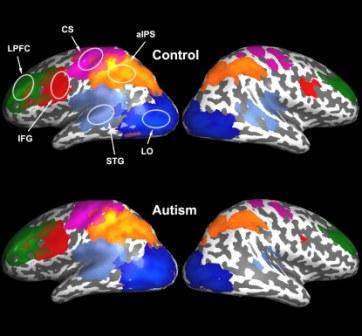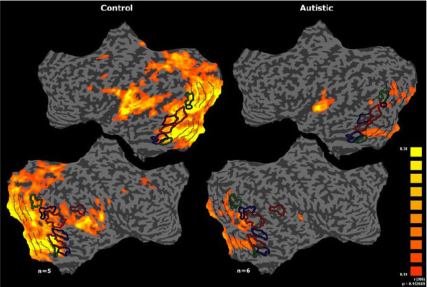More and more children are being diagnosed with autism and related conditions, with the Centers for Disease Control (CDC) estimating that about 1 in 88 children has been diagnosed with an autism spectrum disorder (ASD). ASDs are a group of developmental disabilities characterized by impairment in thinking, feeling, language, and the ability to relate to others. The reason for this increase is unknown, and scientists and doctors worldwide are trying to help affected persons – primarily girls – and their families. At the Weizmann Institute of Science, researchers from across many disciplines are working together to understand the cause or causes of ASDs and develop new treatments. Examples of the Weizmann Institute’s autism research include:
Discovering the first biomarker for autism
The biological causes of autism are still not understood, and diagnosis is currently subjective, based on behavioral symptoms. Now, using functional magnetic resonance imaging (fMRI), renowned Weizmann neuroscientist Prof. Rafael Malach and his team have have found, for the first time, a method that can accurately identify a biological sign of autism in very young toddlers. Read more.

As compared to the control brain (top), the autistic brain (bottom) shows weaker inter-hemispheric synchronization in several areas, particularly the superior temporal gyrus (light blue) and the inferior frontal gyrus (red). From the work of Prof. Rafael Malach.
Learning how the brain transforms optical stimulation into visual perception
With fMRI, Prof. Malach and his team mapped the brains of non-autistic and autistic individuals watching movies. In the non-autistic persons, the films produced strikingly consistent and robust fMRI activation. The results for autistic patients, however, reveal that this effect is dramatically disrupted. The autistic brain was not quiet and inexpressive, though — it appeared to be engaged in spontaneous action. The mystery is that this change was generated from inside the brain, not from outside stimulation such as the movie.

While watching the movie “The Good, The Bad and the Ugly,” the autistic brain (right) shows massive disruption in responses to the external world, compared to the non-autistic brain (left). From the work of Prof. Rafael Malach.
Learning how I-neurons affect a child’s decision making
Children with autism and attention-deficit hyperactivity disorder (ADHD) have an inhibitory neuron (I-neuron) malfunction that doesn’t allow the brain to effectively suppress unwanted information, thus impeding the child’s decision-making process. A major goal of Institute research is to understand how healthy I-neurons work with one another for normal brain development, learning, and memory, and to map the design and function of I-neurons. In the future, researchers may be able to use I-neurons as a mapping tool to understand how one neuron works with another, providing a guide for the development of better treatments for neurological disorders such as autism. Read more.
Using light to trigger autistic behavior
New scientist Dr. Ofer Yizhar is one of a handful of pioneers in the young field of optogenetics — a term that refers to the genetic alterations in specific brain cells that enable them to sense and respond to light. In his lab at Weizmann, Dr. Yizhar plans to shed light — literally — on the workings of the brain, turning specific types of brain cell on and off by flashing a tiny beam of light on them. In early research, scientists were able to use optogenetic tools to create a specific type of neural imbalance in lab mice, resulting in behavior associated with autism. This truly cutting-edge research could lead the way to a different type of treatment and understanding of autism. Read more.
